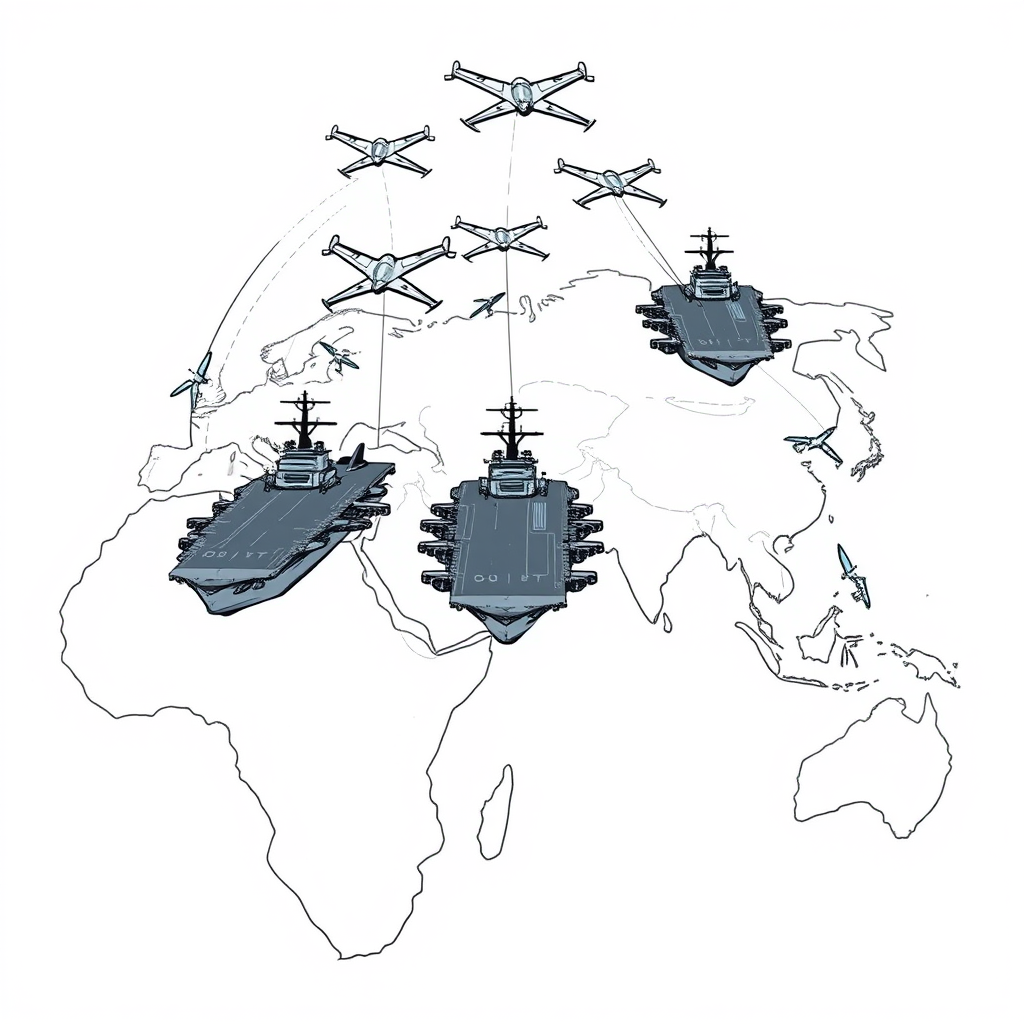US Military Buildup: Bombers and Carriers Deployed

The United States has significantly bolstered its military presence in the Indo-Pacific and the Middle East, deploying its largest contingent of B-2 stealth bombers and increasing its aircraft carrier presence from one to three. This substantial movement of military assets comes amidst escalating tensions in the region, particularly concerning Iran, Yemen, and ongoing concerns about China’s activities in the South China Sea.
Satellite imagery confirms the arrival of at least six B-2 Spirit stealth bombers at Diego Garcia, a joint US-British military base in the Indian Ocean – representing roughly 30% of the entire US B-2 fleet. This deployment, coupled with the positioning of the USS Carl Vinson in the Middle East, the USS Harry S. Truman continuing operations in the Arabian Sea, and the USS Nimitz heading towards the South China Sea, signals a clear demonstration of American power projection.
Pentagon officials justify the move as a necessary step to “improve America’s defensive posture” and reaffirm commitment to regional security. However, the scale of the deployment appears to extend beyond a response solely to the Houthi attacks on commercial and military vessels, or even direct confrontation with Iran over its nuclear program and support for Hamas. While the US has increased military action against the Yemen-based Houthis, who are backed by Iran and have targeted ships, defense analysts suggest the deployment is far more comprehensive. Two B-2 bombers would be sufficient to address the Houthi threat, indicating broader strategic objectives.
The timing coincides with increased pressure from the Trump administration on Iran to renegotiate its nuclear deal, a deal the US unilaterally withdrew from during Trump’s first term. Despite expressing a preference for a diplomatic solution, Trump has not ruled out military action, including potential strikes against Iran’s nuclear facilities.
Beyond Iran, the deployment serves as a clear message to China and Russia, both allies of Iran. The positioning of the USS Nimitz in the western Pacific is a direct signal to Beijing regarding US commitment to safeguarding its interests in the Indo-Pacific region, while the USS Carl Vinson’s presence in the Middle East sends a similar message to Moscow.
This massive military build-up, while framed as defensive, carries significant risks. It escalates tensions in an already volatile region and raises the potential for miscalculation or unintended consequences. While the US maintains it seeks a peaceful resolution to these conflicts, the sheer scale of the deployment suggests a willingness to use force if necessary. The situation demands careful diplomacy and a clear articulation of US objectives to avoid further destabilizing the region. It’s a high-stakes gamble, and the world will be watching closely to see if it pays off.